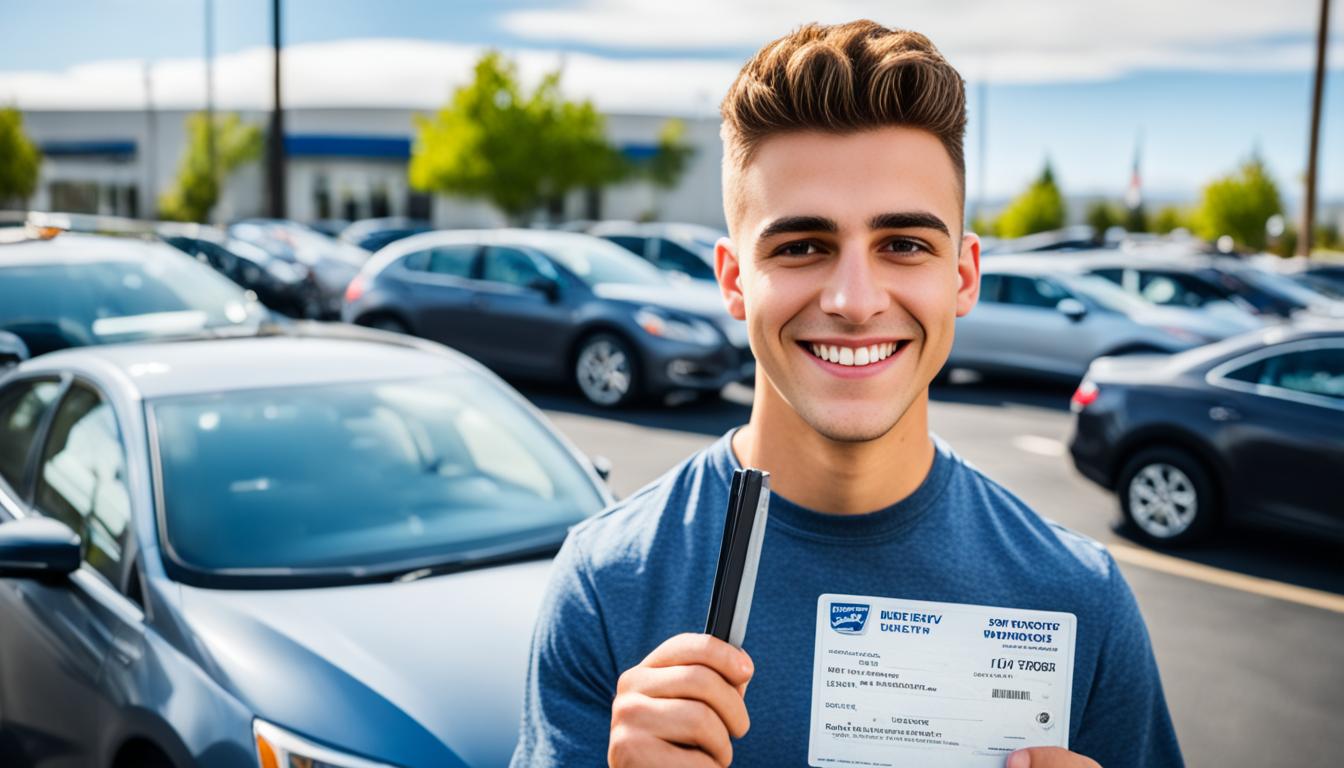Getting Your License at 17: A Quick Guide
Welcome to our quick guide on how to get your driver’s license at 17! We understand that obtaining your driver’s license is an important milestone in your teenage years, and we’re here to help make the process as smooth as possible.
Getting a driver’s license at 17 involves a few steps that you need to follow carefully. From driver’s education to obtaining a learner’s license and eventually a provisional license, each phase is important in preparing you to be a responsible driver.
In this guide, we’ll walk you through the specific requirements and phases of the licensing process in Texas, so you’ll know exactly what to expect and what you need to do. Let’s dive in!
Key Takeaways:
- Obtaining a driver’s license at 17 is an exciting milestone for teenagers.
- The process includes driver’s education, a learner’s license, and a provisional license.
- Each phase has specific requirements and restrictions that you need to fulfill.
- Understanding and following the rules and restrictions are crucial for safe driving.
- By completing the necessary steps, you’ll be on your way to becoming a licensed driver at 17!
Minimum Age Requirements for Getting a Driver’s License in Texas
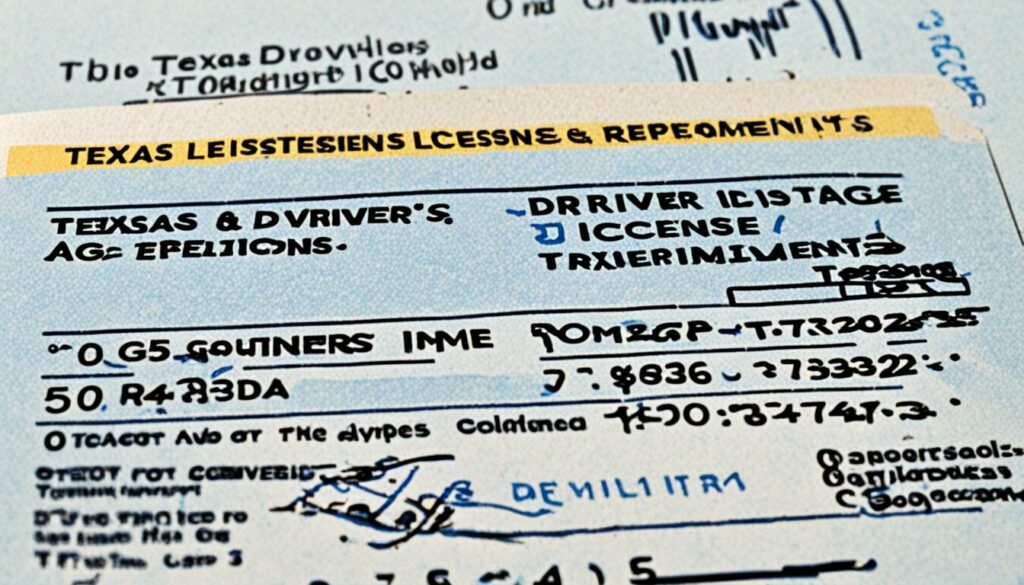
In Texas, there are specific minimum age requirements for obtaining a driver’s license. To help you understand the process, let’s dive into the details.
Driver’s License Age Requirements
The minimum age to obtain a driver’s license in Texas is 16 years old. This is the age at which individuals can apply for a provisional license, granting them the freedom to drive on their own with certain restrictions.
Beginning the Process Early
While the minimum age for a driver’s license is 16, the process can actually begin earlier. In Texas, teenagers as young as 14 years old are eligible to start their driver’s education journey. This allows them to get a head start on the necessary training and knowledge required to become responsible drivers.
The Phases of Getting a License
The process of obtaining a driver’s license in Texas involves several phases, each building upon the previous one:
- Driver’s Education: Starting at 14 years old, teenagers can enroll in driver’s education courses to gain the necessary knowledge and skills for safe driving.
- Learner’s License: At 15 years old, teens can obtain a learner’s license, which allows them to drive under the supervision of a licensed adult.
- Provisional License: Once teens turn 16, they can upgrade to a provisional license, granting them more independence on the road. However, it’s important to note that this provisional license expires on their 18th birthday.
Summary
So, to recap, Texas driver’s license requirements specify a minimum age of 16 years old. However, the process can begin as early as 14 years old with driver’s education. At 15, teens can obtain a learner’s license, and at 16, they can receive a provisional license. Remember, the provisional license expires on their 18th birthday, making it crucial for young drivers to follow the rules and regulations to ensure safe and responsible driving.
Driver’s Education Options for Teens in Texas
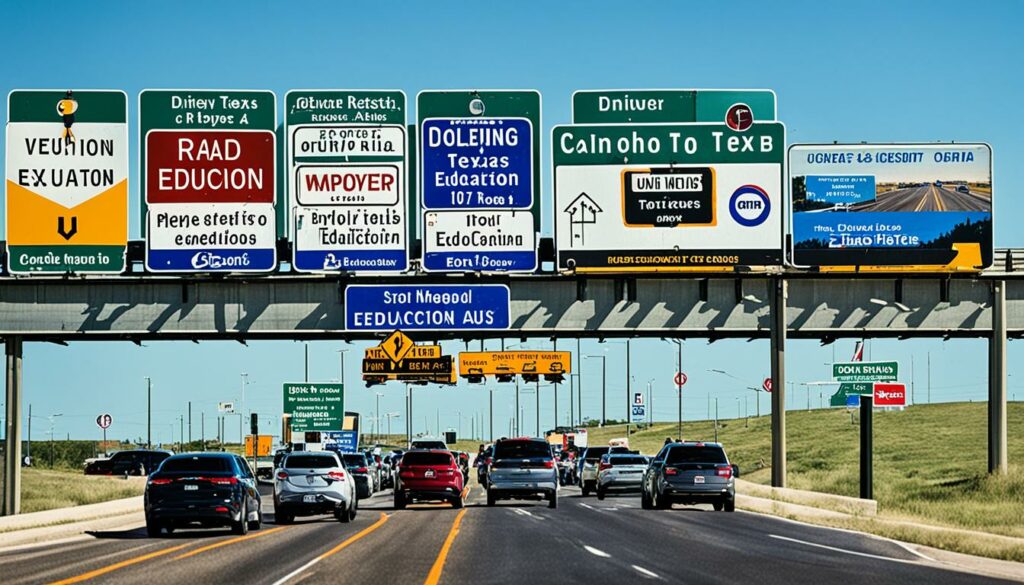
When it comes to driver’s education, Texas offers a variety of options for teenagers. Whether they prefer an in-person classroom setting or the flexibility of online learning, there is a suitable choice for every teen.
1. Traditional Driver’s Education Courses
One of the most common options is attending a traditional driver’s education course through a certified driving school. These courses provide comprehensive training, covering essential topics such as road safety, traffic laws, and defensive driving techniques. Students have the opportunity to learn from experienced instructors and interact with their peers.
2. Online Driver’s Education Courses
If your teen prefers a more flexible approach, online driver’s education courses are a great alternative. These courses allow students to learn at their own pace and from the comfort of their own homes. They typically feature interactive lessons, videos, and quizzes to ensure a thorough understanding of the material. Online courses also provide the convenience of accessing the content anytime, anywhere, making it suitable for students with busy schedules.
3. Parent-Taught Driver’s Education
For parents who wish to take a more hands-on approach, the parent-taught driver’s education option is available. This program allows parents to instruct their teens themselves, following a structured curriculum provided by the Texas Department of Licensing and Regulation (TDLR). It provides an opportunity for parents to actively participate in their teen’s driving education journey and ensure they receive a comprehensive understanding of the rules of the road.
4. Public School Driver’s Education
Some public schools in Texas offer driver’s education courses as part of their curriculum. This option provides convenience for students as they can take the course during regular school hours. It may be worth checking with your teen’s school to see if they offer this program.
With these various options available, teenagers in Texas can choose the driver’s education method that best suits their learning style and preferences. Whichever path they choose, it’s important for teens to complete a driver’s education course to gain the knowledge and skills necessary to become responsible and confident drivers.
Benefits of Driver’s Education
- Improves awareness of traffic laws and regulations
- Enhances understanding of defensive driving techniques
- Instills responsible driving habits and attitudes
- Provides practical on-road training
- Increases confidence behind the wheel
By investing in driver’s education, teens can lay a solid foundation for a lifetime of safe and responsible driving.
Phases of the Graduated Driver License (GDL) Program in Texas
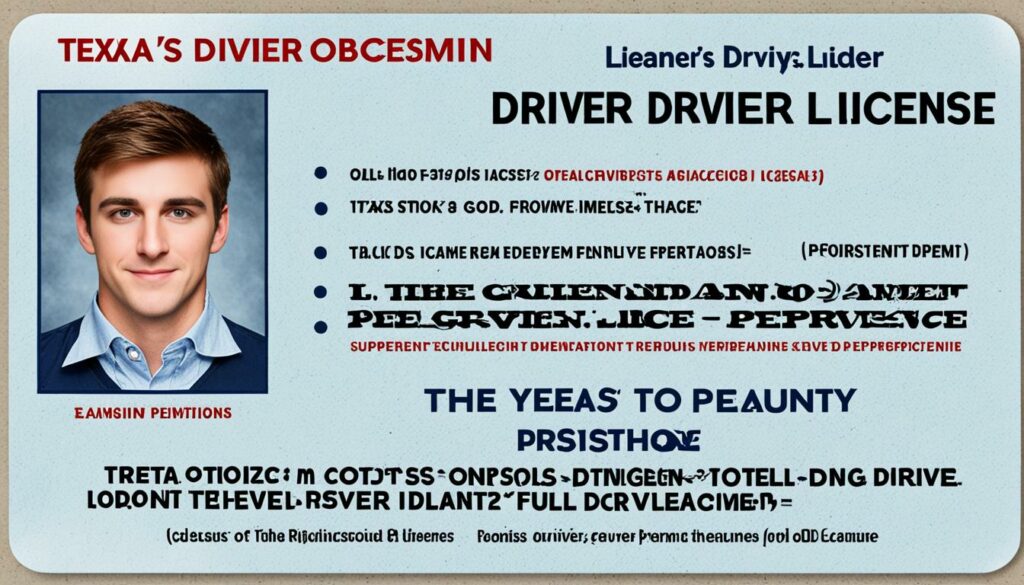
In Texas, the Graduated Driver License (GDL) Program consists of two phases that teenagers must complete in order to obtain their full driver’s license. These phases are crucial for building experience and developing safe driving skills before young drivers can enjoy unrestricted driving privileges.
Learner’s License
The first phase of the GDL program is the learner’s license, also known as the learner’s permit. This phase allows teenagers aged 15-17 to practice driving under the supervision of a licensed adult. During this phase, young drivers gain practical experience behind the wheel while they are still learning the rules of the road and developing their driving skills.
With a learner’s license, teens can drive as long as there is a licensed adult over the age of 21 accompanying them in the front passenger seat. This ensures that there is guidance and supervision during their practice sessions on the road. It’s important to note that the learner’s license has certain restrictions, such as limited hours of driving and restrictions on the number of passengers.
Provisional Driver’s License
The second phase of the GDL program is the provisional driver’s license. To qualify for a provisional license, teenagers must hold their learner’s license for at least six months and complete the required hours of behind-the-wheel training. This training includes supervised driving with a certified instructor or a licensed adult.
Once teenagers meet these requirements, they can apply for a provisional driver’s license, which allows them to drive without adult supervision. The provisional license serves as an intermediate step between the learner’s license and the full driver’s license. During this phase, young drivers gain more independence and driving privileges, but there are still certain restrictions in place, such as limitations on nighttime driving and the number of passengers they can carry.
It’s important for teenagers to understand and abide by the rules and restrictions of each phase of the GDL program in order to ensure their safety and the safety of others on the road. By successfully completing both phases, young drivers can progress towards obtaining their full driver’s license and enjoy the freedom and responsibilities that come with it.
For more information about the Graduated Driver License (GDL) Program in Texas, visit the Texas Department of Public Safety website.
Requirements for Obtaining a Learner’s License in Texas
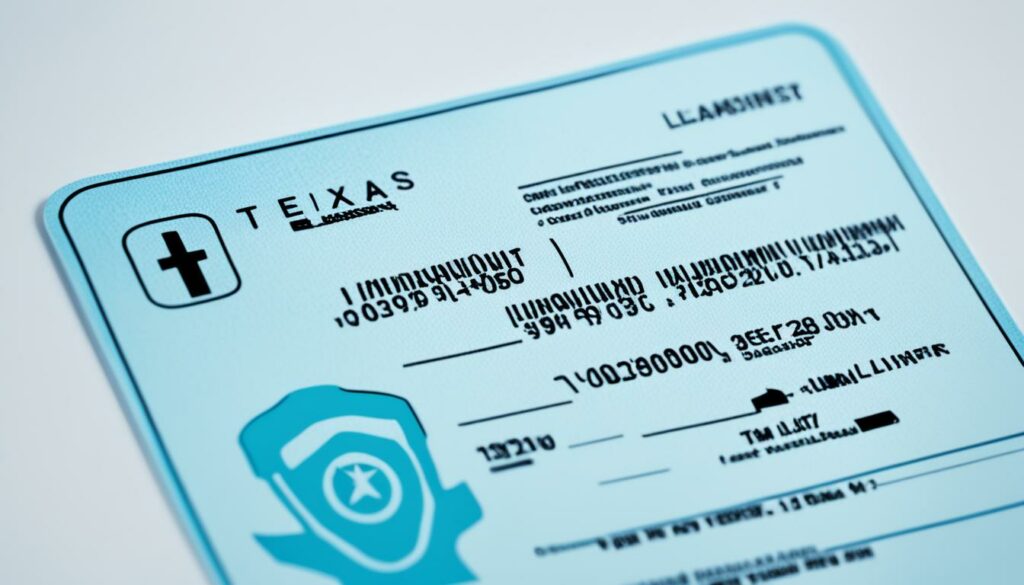
Before teenagers in Texas can embark on their journey to becoming licensed drivers, they must meet specific requirements to obtain a learner’s license. These requirements are in place to ensure that aspiring drivers have the necessary knowledge and skills to begin their driving education in a safe and responsible manner.
To be eligible for a learner’s license, teens in Texas must complete the required hours of driver’s education. This education is typically provided through certified driving schools or online driver’s education courses, offering comprehensive instruction on the rules of the road, safe driving techniques, and defensive driving strategies.
In addition to completing driver’s education, teens will need to provide documentation of their high school enrollment, high school diploma, or an equivalent educational credential. This requirement helps to ensure that young drivers are actively engaged in their education while learning to operate a vehicle.
When applying for a learner’s license, teens will also need to bring various documents to the Texas Department of Public Safety (TDPS) office. These documents include proof of US citizenship or lawful presence, proof of Texas residency, proof of identity, proof of Social Security number, and proof of vehicle insurance. By verifying these documents, the TDPS can establish the applicant’s identity and eligibility to begin the driver’s licensing process.
Obtaining a learner’s license is an important step towards becoming a licensed driver in Texas. It allows teenagers to gain practical driving experience under the supervision of a licensed adult before progressing to the next phase of the graduated driver license program. By completing the necessary driver’s education and providing the required documentation, teens can take their first steps towards achieving their driving goals.
Important Documents for Obtaining a Learner’s License in Texas:
| Documents | Description |
|---|---|
| Proof of US citizenship or lawful presence | Valid documentation establishing the applicant’s US citizenship or lawful presence in the country. |
| Proof of Texas residency | Documents showing the applicant’s residency in the state of Texas, such as utility bills or lease agreements. |
| Proof of identity | Valid identification documents, such as a birth certificate or passport, that establish the applicant’s identity. |
| Proof of Social Security number | Documentation verifying the applicant’s Social Security number, such as a Social Security card or W-2 form. |
| Proof of vehicle insurance | Evidence of valid vehicle insurance coverage for the vehicle that will be operated during the learner’s permit phase. |
By ensuring that these requirements are met, the Texas Department of Public Safety can promote the development of responsible and well-prepared young drivers. Obtaining a learner’s license is an essential step on the path to becoming a licensed driver, providing teens with the opportunity to gain valuable experience and knowledge as they progress through the driver’s licensing process.
Requirements for Obtaining a Provisional Driver’s License in Texas
Once teenagers have held a learner’s license for six months and completed the necessary behind-the-wheel training, they are eligible to apply for a provisional driver’s license in Texas. To successfully obtain this license, they must bring specific documents to their local Texas Department of Public Safety (TDPS) office.
The following documents are required when applying for a provisional driver’s license in Texas:
- Completed Application: Teens must fill out the application form provided by the TDPS.
- Proof of Identity: A valid and unexpired identification document that verifies the teen’s identity, such as a birth certificate or passport.
- Evidence of Lawful Status: Documentation that proves the teen’s lawful presence in the United States, such as a Social Security card or immigration document.
- Proof of Social Security Number: A valid Social Security card or a document that verifies the teen’s Social Security number.
- Completion Certificates: The teen must present completion certificates for both the Impact Texas Teen Driver course and a state-approved driver’s education course.
- Proof of Enrollment and Attendance in School: Documentation that confirms the teen’s enrollment and regular attendance at a school, such as a report card or school transcript.
- Proof of Vehicle Insurance: Evidence of valid vehicle insurance coverage for the vehicle the teen will be driving during the licensing process.
- Application Fee: The required fee for applying for a provisional driver’s license in Texas, which can be paid in cash, check, or by credit card.
All of these documents must be presented in person at the TDPS office, along with the completed application and the application fee. It’s important for teenagers to ensure they have all the necessary documents before visiting the office to avoid any delays in the licensing process.
By meeting these provisional license requirements, teens can take a significant step towards obtaining their full driver’s license in Texas and enjoy increased driving privileges.
| Requirements for Obtaining a Provisional Driver’s License in Texas |
|---|
| 1. Completed Application |
| 2. Proof of Identity |
| 3. Evidence of Lawful Status |
| 4. Proof of Social Security Number |
| 5. Completion Certificates Impact Texas Teen Driver Course State-Approved Driver’s Education Course |
| 6. Proof of Enrollment and Attendance in School |
| 7. Proof of Vehicle Insurance |
| 8. Application Fee |
Driving Privileges and Restrictions for Teens with a Learner’s Permit or Provisional License in Texas
Teens with a learner’s permit in Texas have specific driving privileges and restrictions. To ensure safe driving practices, they are required to have a licensed adult over 21 years old in the passenger seat. This adult must be prepared to take control of the vehicle if necessary. It is essential for teens to follow these restrictions to avoid any potential incidents on the road.
Learner’s Permit Restrictions:
- Teens must hold the learner’s permit for a minimum of six months.
- Alternatively, they must keep the permit until they reach the age of 18.
These restrictions on the learner’s permit are in place to ensure that teens have enough time to practice driving under supervision and gain the necessary experience before obtaining their provisional license.
Provisional License Restrictions:
- Provisional license holders are granted increased driving privileges compared to learners with certain restrictions still in place.
- They are restricted from driving with more than one passenger under the age of 21, unless they are siblings.
- Nighttime driving is also restricted, and provisional license holders are required to adhere to curfew hours, which typically range from midnight to 5 a.m.
These restrictions aim to mitigate the risks associated with teen drivers and promote safe driving habits during critical periods such as late-night driving and distraction that can occur with multiple passengers in the vehicle.
It is crucial for teen drivers to understand and abide by these restrictions to ensure their safety as well as the safety of others on the road.
| Driving Privileges and Restrictions | Learner’s Permit | Provisional License |
|---|---|---|
| Minimum Age to Obtain | 15 years old | 16 years old |
| Restrictions | No more than one passenger under 21 (unless siblings) and restricted nighttime driving | |
| Duration | Minimum of 6 months or until the age of 18 | Expires on the 18th birthday |
Renewing a Provisional Driver’s License in Texas
Once a teen obtains a provisional driver’s license in Texas, they should be aware that it has an expiration date. The provisional license will expire on their 18th birthday, and it is important to renew it before that date to maintain their driving privileges.
To renew a provisional license, there are two options available: online renewal or renewal in person at the Texas Department of Public Safety (TDPS) office. It is recommended to renew the license up to 30 days before the expiration to ensure that there is no lapse in driving privileges.
If the renewal is done online, the teen can visit the TDPS website and follow the instructions to renew their license. They will need to provide the necessary information and documentation, including their current license number and personal details.
On the other hand, if the teen prefers to renew the license in person, they will need to visit the TDPS office. It is important to note that if the renewal is done after the 18th birthday, the teen must make arrangements to visit the office without driving, as the expired license will no longer be valid for driving purposes.
Regardless of the chosen renewal method, it is essential to ensure the license is renewed before it expires to avoid any legal issues or disruptions to driving privileges. By renewing the provisional license, teens can continue to enjoy the independence and freedom that comes with having a driver’s license.
Conclusion
Obtaining a driver’s license at 17 is an exciting and important milestone for teenagers. It signifies a new level of independence and opens up a world of possibilities. However, this process requires time, dedication, and adherence to the necessary steps.
To get a license at 17, teenagers first need to complete driver’s education, which can be done through various options available in their state, such as attending a driving school, taking an online course, or opting for parent-taught education. This education equips them with the necessary knowledge and skills to become responsible drivers.
Once they have completed driver’s education, teens can progress through the phases of the Graduated Driver License (GDL) program, starting with a learner’s license. This learner’s license allows them to practice driving with a licensed adult before advancing to a provisional license. By fulfilling the requirements and completing the necessary behind-the-wheel training, they can obtain their provisional license at 17.
It’s essential for teenagers to understand and follow the driving privileges, restrictions, and rules associated with their learner’s permit or provisional license. By doing so, they can ensure their safety, the safety of others on the road, and maintain good driving habits throughout their driving journey.
FAQ
What is the minimum age to obtain a driver’s license in Texas?
The minimum age to obtain a driver’s license in Texas is 16.
Can I start the driver’s license process before the age of 16?
Yes, in Texas, you can start the driver’s license process as early as 14, with driver’s education.
What options do teens have for driver’s education in Texas?
Teens in Texas can choose to attend a traditional driver’s education course through a certified driving school, take an online driver’s education course, opt for parent-taught driver’s education, or check if their public school offers driver’s education.
What are the phases of the Graduated Driver License (GDL) Program in Texas?
The GDL Program in Texas consists of two phases: the learner’s license phase and the provisional driver’s license phase.
What are the requirements for obtaining a learner’s license in Texas?
To obtain a learner’s license in Texas, teens must complete the required hours of driver’s education and provide documentation of their high school enrollment, high school diploma, or equivalent. They also need to bring various documents, such as proof of US citizenship, Texas residency, identity, Social Security number, and vehicle insurance.
What are the requirements for obtaining a provisional driver’s license in Texas?
After holding a learner’s license for six months and completing the necessary behind-the-wheel training, teens can apply for a provisional driver’s license in Texas. They need to bring specific documents, including the completed application, proof of identity, evidence of lawful status, proof of Social Security number, completion certificates for Impact Texas Teen Driver and driver’s education courses, proof of enrollment and attendance in school, proof of vehicle insurance, and an application fee.
What are the driving privileges and restrictions for teens with a learner’s permit or provisional license in Texas?
Teens with a learner’s permit in Texas must have a licensed adult over 21 in the passenger seat when driving. They must hold the permit for six months or until they turn 18. Provisional license holders have increased driving privileges but still have restrictions, such as limits on the number of passengers and nighttime driving.
How can I renew a provisional driver’s license in Texas?
A provisional driver’s license in Texas expires on the teen’s 18th birthday. It can be renewed up to 30 days before the expiration, either online or in person at the TDPS office. If renewing in person after the 18th birthday, the teen must visit the office without driving.
What is the process for getting a driver’s license at 17 in Texas?
The process of getting a driver’s license at 17 in Texas involves several phases, including driver’s education and obtaining a learner’s license, before finally receiving a provisional license.

